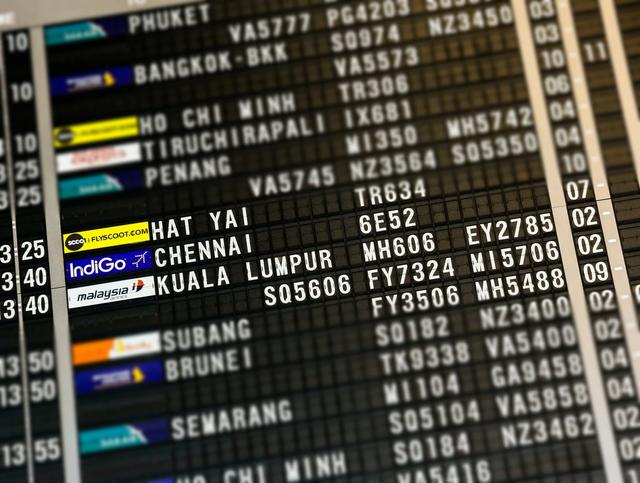What Forecasts and Trends to Expect from the Travel Industry 2022
Paul Reilly
Chief Commercial Officer
One word dominated departure boards in 2020, summing up the global travel and tourism industry: “cancelled”. Travellers the world over waited for the inevitable email notifying them that their trip was off after the industry was grounded by lockdowns and travel restrictions aimed at taming Covid-19 — shuttering borders, greatly reducing flight numbers and wreaking havoc on tourism and travel-focused businesses of every conceivable kind.
Tentative industry optimism was in the air as 2021 dawned amid the rollout of vaccinations and the easing of travel restrictions, prompting a small rebound in the second half of the year. However, the spread of the Omicron variant in December triggered another dip in both travel bookings and industry optimism - and the overall picture for 2021 remained bleak.
The global travel and tourism industry scarcely improved last year compared to 2020 - when worldwide revenue dipped by $935 billion in the first 10 months of the year alone - with all gauges of activity remaining well below pre-pandemic levels and industry professionals not expecting a full recovery before 2024. The industry’s direct gross product jumped 19 per cent in 2021 from 2020 to $1.9 trillion, as tourists spent more and stayed longer - but revenue still barely exceeded half its 2019 levels.
Will the global travel and tourism industry be able to get off the ground in 2022 and start the journey to recovery? Several forecasts and trends are expected to impact the industry’s landscape, seascape and airspace over the coming months.
Join the currency specialists
Inflation
Red-hot inflation in countries like the UK and US has prompted a chorus of experts to express concern that rising prices could restrict the green shoots of growth in the global economy - which is sending shockwaves through the travel and tourism industry.
Consumer prices in the UK have accelerated at their fastest rate in nearly 30 years - and there is worse to come, experts have warned. Soaring living costs and the energy bill crisis shot inflation up to 5.4 per cent in the 12 months to December 2021, from 5.1 per cent in November - and even further from the Bank of England’s 2 per cent target. It’s a similar story on the other side of the Atlantic, where the price of goods and services is surging at rates unseen in decades, jumping to 7 per cent in December compared to 12 months earlier – the seventh consecutive month in which US inflation has exceeded 5 per cent.
Consequently, the cost of just about every aspect of travel is inflating for the consumer - a trend that will dent travel and tourism businesses if people are deterred from going away. Take the US for example, where the US Travel Association’s travel price index - which draws from Department of Labour data - revealed travel prices rose 14.4 per cent in October 2021 compared to 2020. The biggest drivers for these price increases are motor fuel, which was up nearly 50 per cent in October compared to 2020, and hotels and motels, up more than 25 per cent. Also on the rise is food and alcohol, transportation costs and recreation services.
Soaring prices reflect the lows that travel prices fell to in 2020 when fewer people were taking trips. However, prices were still up 6.2 per cent in October 2021 compared to the same period in 2019 - before the pandemic struck. It’s worth noting that overall inflation rose 7.5 per cent compared to 2019 - more than travel prices. One industry sub-sector that’s bucking the trend is airfare, which was down 4.6 per cent compared to 2020 and 24 per cent compared to 2019. However, air travel remains subdued - and is not expected to return to pre-pandemic levels until 2024.
International tourist arrivals

With severe restrictions to travel still in place, it was slow going in terms of international tourist arrivals last year. According to the first 2022 issue of the World Tourism Organisation (UNWTO) World Tourism Barometer, arrivals increased by just 4 per cent in 2021 - an eye-watering 72 per cent below 2019 levels, which equates to more than one billion fewer international arrivals. We must look back to the late 1980s to see the industry at such deflated levels.
Before the pandemic dealt an indiscriminate blow to the global travel and tourism industry, it had experienced almost uninterrupted growth for over 40 years. Since 1980, the number of international arrivals skyrocketed from 277 million to nearly 1.5 billion in 2019. Even two major global crises - the SARS epidemic of 2003 and the global financial crisis of 2009 - were minor speed bumps compared to the pandemic.
So, what does 2022 hold in store for these figures, given that 63 per cent of experts from the UNWTO believe the sector won't fully recover until 2024? These experts are confident we will see an uptick in travel activity this year, but just 4 per cent expect a full recovery in 2022. Around one third believe that international arrivals will return to pre-pandemic levels in 2023, while 63 per cent think it will take even longer. UNWTO scenarios estimate that international tourist arrivals could grow between 30 and 78 per cent in 2022 compared to 2021 - which would still be more than 50 per cent below pre-pandemic levels.
Bank-beating international payments
2021 UK budget implications
The travel and tourism industry kept a close eye on the UK’s autumn budget on 27 October 2021 - and its response was mixed: praise for business rates relief, but concerns over changes to Air Passenger Duty (APD).
According to Mark Tanzer, chief executive of The Travel Association (ABTA): “The budget offers some help to retail travel companies, but does not go far enough to support the recovery of the international travel and tourism industry – the sector hit hardest by the pandemic and one that is critical to the wider economic recovery.”
“It is good that the government has responded to our calls to continue business rates relief by cutting rates by 50 per cent; this should help high-street travel agents.”
He added: “However, this is a sector that has faced tighter government-imposed constraints on trade than almost any other, including severe restrictions throughout the critical summer season.”
“The chancellor could have done more to recognise this fact – by providing tailored recovery grants to travel agents, tour operators and travel management companies.”
The chancellor confirmed the government would cut domestic APD from £13 to £6.50 in April 2023, as it strives to boost air travel within the UK as part of its ‘levelling up’ ambition. However, the budget also outlined details of a new higher band of APD for ultra-long-haul distance flights.
The increase to £91 for an economy class flight above 5,500 miles will impact trips to popular Asian and Latin American cities, including Hong Kong, Bangkok, Singapore, Tokyo, Buenos Aires and Santiago.
Tanzer continued: “In addition, while we support the decision to remove double-taxation on domestic Air Passenger Duty from April 2023, it is regrettable that this cut will be partially offset with increased rates for long-haul flights.
Labour shortages

A massive travel and tourism industry jobs shortfall is looming on the horizon in 2022 to the tune of more than 200,000 positions across the UK, which are predicted to remain unfilled by the end of the year - according to analysis by the World Travel and Tourism Council (WTTC).
Data compiled by Oxford Economics on behalf of WTTC outlined staff shortages across the UK and other major travel destinations - including the US, Spain, France, Italy and Portugal - between July and December 2021 and 2022. Each market demonstrated a significant shortfall, with employment demand outstripping labour supply. This has left travel and tourism businesses struggling to fill job vacancies as unemployment rates drop and demand spikes.
Take the UK for example, which is forecast to experience a shortfall of around 12 per cent, with as many as one in eight job vacancies left unfilled. WTTC president and chief executive Julia Simpson said: “The UK’s economic recovery could be jeopardised if we don’t have enough people to fill these jobs as travellers return.”
“If we cannot fill these vacancies, it could threaten the survival of travel and tourism businesses up and down the UK. Companies dependent on tourism have been hanging on for the upside, but this is just another blow that many may not survive.”
Since demand for travel began to pick up during the second half of last year, amid an easing of restrictions and the recovering domestic market, the squeeze on labour has been unable to keep pace. According to the WTTC report, demand for jobs was almost 1.7 million in the second half of 2021, with labour shortages projected at 205,000 - equating to one in eight unfilled vacancies. Moving into 2022, the labour market next is expected to remain tight with an estimated shortage of 15,000 workers.
The report also outlines potential steps governments and businesses can take to mitigate the labour shortage crisis, recognising the impact of furlough schemes - including, facilitating labour mobility and remote working, providing social safety nets, up-skilling and re-skilling the workforce, retaining talent and creating and promoting education and apprenticeships.
Currency risk exposure
Challenges remain for the travel and tourism industry as Covid-19 restrictions ease, but opportunities will also present themselves - not least the opportunity to save money when making international payments amid pandemic-fuelled currency market volatility. As businesses adjust to the new normal and plan for the future, they must be acutely aware of the need to manage their exposure to currency risk.
Currencies are traded around the clock - 24 hours a day. Therefore, the value of the pound against other currencies is constantly changing - not just daily but by the minute. Why do they fluctuate in value? Currencies strengthen and weaken each day because banks and investors purchase huge volumes in response to political and economic news: positive news about a country typically causes the value of the currency to rise (“strengthen”), while bad news causes it to fall (“weaken”).
We also know when they might move because we often know the timing of political events that might influence them, and the economic calendar shows us when influential economic data will be released. However, there will also be news that happens without warning - anything from a US president tweeting late at night to a fall in the price of bauxite.
What we cannot predict – and no one can – is whether they will move up or down or by how much. Even slight fluctuations can make a big difference to the price of your business’s international payments. In some instances, the impact of the political and economic variables that influence exchange rates can be severe, as has been proved in recent times. For example, back in March 2020, when the true extent of the Covid-19 pandemic became clear, the pound sunk to its lowest level against the dollar since 1985 and its lowest level against the euro since the depth of the financial crisis 11 years earlier.
Before the pandemic struck, this exposure to currency market risk had the potential to dent your bottom line if left unaccounted for. Since then, however, the importance of mitigating the impact of exchange rate fluctuations on the cost of your international payments has been magnified. This has brought the need to seek the services of a currency specialist into sharp focus for many businesses in the travel and tourism industry.
Clear Treasury

Clear Treasury are experts providing clients with the knowledge and tools they need to operate across borders. Against the backdrop of a global pandemic, this guidance and expertise are more crucial than ever. Our relationship-focused approach achieves long term success and is underpinned by our dedication to excellent customer service.
We understand how technology is at the core of how businesses operate in the modern digitally-enabled world. This has enabled us to develop a technology platform that seamlessly integrates our products and services into your ecosystem - removing the complexity and risk involved in making international payments.
Our knowledge and experience allow us to provide our clients with solutions and guidance that help their business thrive when engaged in international trade, both through our team of experts and our innovative technology - and opening an account to access this specialist service is quick and easy.
You will be assigned a dedicated account manager who can help you to plan and establish a proactive hedging strategy. There’s no “one size fits all” approach to protecting your bottom line from the threat of currency risk. Therefore, a bespoke hedging strategy that aligns with your requirements, commercial context, and risk appetite will allow your business to execute effective solutions that sync with its aims. This dedicated expert can provide guidance and support on tools to track, target or fix exchange rates for currency transfers to hedge against currency risk when making international payments.
Access over 35 currencies
Related Articles
Daily Analysis: GBP/USD Hits 14-Month Lows Amid Severe Economic Uncertainty
Our daily analysis of EUR, GBP and USD.
Read more
Weekly Round-Up & The Week Ahead
Our weekly round-up and a look at the week ahead for EUR, GBP and USD.
Read more
The Rise of B2B Cross-Border Payments
Businesses that wish to protect their overseas markets or expand their international trade, must innovate their payments processes internally, or in concert with a technologically advanced fintech provider. Read on to discover more about the rise of cross-border B2B payments and what your business needs to do to stay ahead.
Read more



